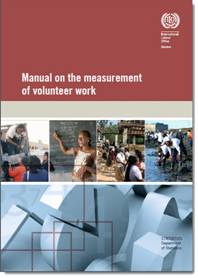Login | Subscribe | Stay Engaged | About | Partnerships | Contact
Statistics on Volunteering
Volunteer Retention and Community Service Self-Efficacy

If you Google it, there are 10 times the number of articles on “volunteer recruitment” than “volunteer retention.” With the number of volunteers declining nationally, understanding the dynamics and rates of volunteer retention for different groups of volunteers is crucial.
In this Research to Practice, reviewer Laurie Mook presents the findings of several studies that investigate predictors of volunteer retention, with a special focus on a recent study that explores how volunteers’ feeling of “community service self-efficacy” (CSSE) affects their continued volunteer engagement. This study—based on results of a volunteer program assessment survey of volunteers in three U.S. nonprofit organizations—was influenced by research on students in service-learning courses. In terms of practice, a volunteer’s feeling of CSSE can be assessed in the recruitment process, and increases or decreases in CSSE measured periodically. As Mook explains, this information can be useful for developing and refining volunteer management practices that contribute to volunteer retention.
The Sky Is Not Falling . . . Yet! Ten Strategies for Shorter-Term Volunteers





“People just don’t commit like they used to!” is a common complaint of leaders of volunteer engagement who find themselves confronting the new trend of shorter-term volunteers. Many of us struggle these days with recruiting volunteers – or, at least, the kind of long-term volunteers we used to find.
Despite the shared experiences of volunteer managers facing this trend, there is little documentation of these changes and few resources on how to deal with an increase in the rising number of volunteers who seek shorter commitments to fit busier lifestyles. Is this trend a tidal wave where most volunteers are only making one-time or few-month commitments, or are organizations still seeing a balance of volunteers interested in different time commitments? What strategies are helpful when thinking about engaging individuals in shorter-term roles? Are there any pitfalls to avoid?
In a two-year initiative that began in 2014, the Minnesota Association for Volunteer Administration (MAVA) set out to answer these questions, learn more about the trend, and gather strategies that have successfully addressed the issue. MAVA authors share the results of their research in this e-Volunteerism feature, and conclude that the sky is not falling in . . . yet. They also provide 10 proactive strategies to address the trend, including how to: design position descriptions specifically for shorter-term volunteers; use technology to be more efficient; and avoid caving into pressure to involve shorter-term volunteers if this does not stay true to mission and policies.
In Giving, How Much Do We Receive? The Social Value of Volunteering

Andrew G. Haldane, Chief Economist, Bank of England, recently stated that “whether seen from an economic or social perspective, volunteering is big business, with annual turnover well into three-figure billions.” And in his recent lecture to the Society of Business Economists in London, Haldane also pointed out that volunteering “is a well-hidden jewel, whose social worth is rarely the subject of a public valuation.”
In this special feature, e-Volunteerism presents an edited excerpt of Haldane’s lecture, which provides what Haldane describes as “a valuation, however imperfect” to help understand the social value of volunteering and exactly why this economist thinks it is so important. “If the value of volunteering remains largely out of sight, it is likely also to remain out of mind,” Haldane predicted. “The potential economic and societal benefits from volunteering then risk remaining un-tapped. Yet with a nudge, that volunteer army could swell further.”
Because Haldane is an internationally recognized economist, his presentation carries considerable influence and importance for the volunteer community. Haldane’s lecture includes a description of the fascinating volunteer service called Pro Bono Economics that he helped establish in the UK, which will be of great interest to all e-Volunteerism readers.
Too Much? Too Little? Or Just Right? A Study of Accountability for Volunteer Contributions
 In the last quarter century, nonprofits have increasingly been held accountable for the resources that have been entrusted to them. For some organizations, accountability mechanisms have been imposed left, right, and center, as funders and donors seek to monitor the use of the funds they provide. While a reasonable amount of accountability is beneficial all around, too much emphasis on this measure can be stifling and may indeed have exactly the opposite effect of what it intended to promote: efficient and effective use of resources.
In the last quarter century, nonprofits have increasingly been held accountable for the resources that have been entrusted to them. For some organizations, accountability mechanisms have been imposed left, right, and center, as funders and donors seek to monitor the use of the funds they provide. While a reasonable amount of accountability is beneficial all around, too much emphasis on this measure can be stifling and may indeed have exactly the opposite effect of what it intended to promote: efficient and effective use of resources.
While we generally can find information on the financial resources used by nonprofits, public disclosure of the amount and significance of volunteer contributions to those organizations is far less common. In this Research to Practice, Laurie Mook presents the findings of researchers in Australia who set out to determine just how organizations account for volunteer services. The study involved over 400 nonprofit organizations. The researchers systematically reviewed these organizations’ websites and annual reports for any disclosure of volunteer contributions, including their acknowledgement; how they supported mission and the wider community; human resources measures such as the number of volunteers and hours contributed; and policies guiding their involvement.
How well did the organizations do in discharging their accountability for their reliance on and use of volunteer contributions? Too much, too little or just right? As Mook reveals, the results are enlightening.
Employee Volunteering – What Companies Want and How Nonprofits Can Give It to Them
 More and more, companies want to engage their communities through employee volunteering programs. For most businesses, this means calling a nonprofit and scheduling an activity. The nonprofits that can readily design and host successful employee volunteering events will find themselves critical and necessary assets in what has quickly become a key business strategy. Understanding why employee volunteering is important to companies is key to creating a good partnership. In this article, author Chris Jarvis provides some insights into what companies want from employee volunteering programs, and how nonprofits can position themselves as an indispensable corporate partner.
More and more, companies want to engage their communities through employee volunteering programs. For most businesses, this means calling a nonprofit and scheduling an activity. The nonprofits that can readily design and host successful employee volunteering events will find themselves critical and necessary assets in what has quickly become a key business strategy. Understanding why employee volunteering is important to companies is key to creating a good partnership. In this article, author Chris Jarvis provides some insights into what companies want from employee volunteering programs, and how nonprofits can position themselves as an indispensable corporate partner.
Measuring Volunteering: Why Wrong Conclusions Are Unacceptable
 In a Research to Practice article in e-Volunteerism last year, Laurie Mook explored the Manual on the Measurement of Volunteer Work, a recent publication of the International Labour Organisation (ILO). The manual was designed "to guide countries in generating systematic and comparable data on volunteer work via regular supplements to labour force or other household surveys." The European Commission and the European Volunteer Centre soon endorsed its findings.
In a Research to Practice article in e-Volunteerism last year, Laurie Mook explored the Manual on the Measurement of Volunteer Work, a recent publication of the International Labour Organisation (ILO). The manual was designed "to guide countries in generating systematic and comparable data on volunteer work via regular supplements to labour force or other household surveys." The European Commission and the European Volunteer Centre soon endorsed its findings.
Volunteer management representatives need to take another careful and critical look at what the ILO is really saying in the manual, which we aruge presents some faulty conclusions. Though most practitioners will not read this sort of academic tome, at least some of us must pay attention and speak out because government officials and funders will no doubt be guided by the Manual and its conclusions. In this Voices article, author Rob Jackson offers his personal opinions and encourages further exchange and perspectives from e-Volunteerism readers.
Manual on the Measurement of Volunteer Work
 For nearly two decades,the Johns Hopkins University Center for Civil Society Studies research group has conducted comparative research on volunteer work and the nonprofit sector. This year, in conjunction with the International Labour Organization (ILO) and in collaboration with the United Nations Volunteers and an international Technical Experts Group, the Johns Hopkins Center has published a Manual on the Measurement of Volunteer Work. The Manual was developed “to help statistical agencies around the world track the amount, type and value of volunteer work in their countries” in a systematic, regular and comparative fashion. Although national statistical agencies are its primary focus, the influential document also provides food for thought for measuring volunteer work at the organization level. This quarter’s Research to Practice presents highlights from this work.
For nearly two decades,the Johns Hopkins University Center for Civil Society Studies research group has conducted comparative research on volunteer work and the nonprofit sector. This year, in conjunction with the International Labour Organization (ILO) and in collaboration with the United Nations Volunteers and an international Technical Experts Group, the Johns Hopkins Center has published a Manual on the Measurement of Volunteer Work. The Manual was developed “to help statistical agencies around the world track the amount, type and value of volunteer work in their countries” in a systematic, regular and comparative fashion. Although national statistical agencies are its primary focus, the influential document also provides food for thought for measuring volunteer work at the organization level. This quarter’s Research to Practice presents highlights from this work.
Volunteer Transitions among Older Americans
This Research to Practice looks at a study of older volunteers and their volunteering profile. It is a study which uses panel data (that is, it tracks the same people over a period of time) between 1996 and 2004. The incorporation of panel data is quite useful, because so often research is a ‘snapshot’ at a specific time. This study tracks people between the ages of 55 to 65 in 1996, and then asks them about their volunteering practices every two years up to 2004. As you will see, the results tell us something about who volunteers, and something about why some people do not.
Using Technology to Understand Volunteering Trends
One of the more interesting leisure pastimes is watching the Internet colossus Google release new tools and gadgets to supplement its basic search engine. One of these we’ve been contemplating lately is www.google.com/trends. One of the things about search engines like Google is that they provide an opportunity to see what people are interested in based on what search terms are utilized.
For those of you who are wondering what any of this has to do with volunteerism, we’ll stop to make a point so obvious that many volunteer managers tend to forget it.
Volunteering is a leisure activity that people fit into the rest of their lives, making the determination to allocate some of their discretionary time to volunteering based on how much time they have available and how interesting or important volunteering seems compared to other activities in which they might engage. In one sense, volunteering is a competitive sport, but the major competition is not other volunteer activities as much as it is other activities, period.
Google Trends allows you to see what people are searching for, and to see in which cities the term is search for most often. And since you can’t have a “trend” without a timeline, you can see a graph plotting usage over the past years in which Google has collected data. See what we learned by searches on volunteer, volunteering, and community service and what all this might mean to you.
